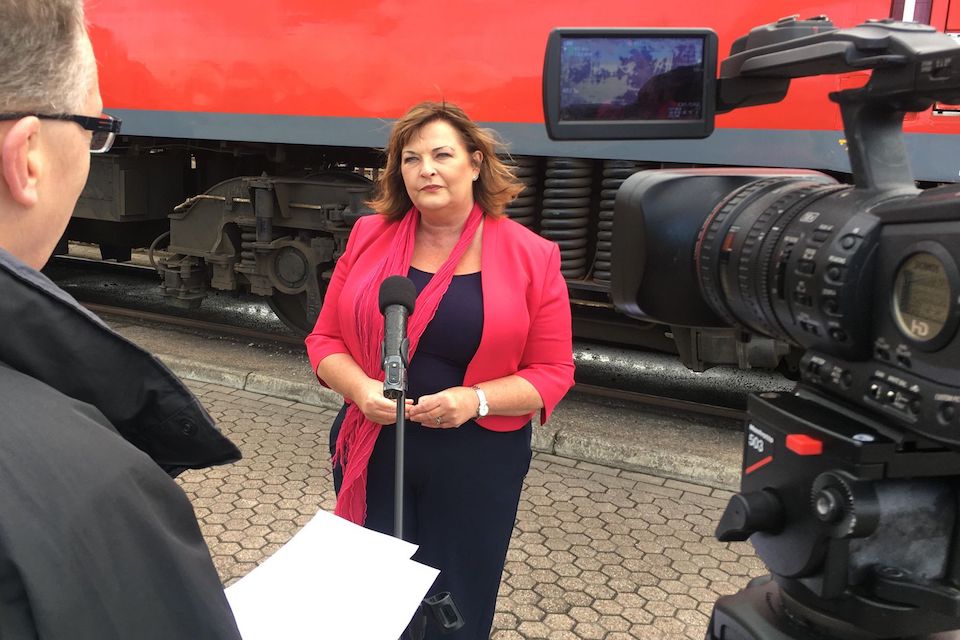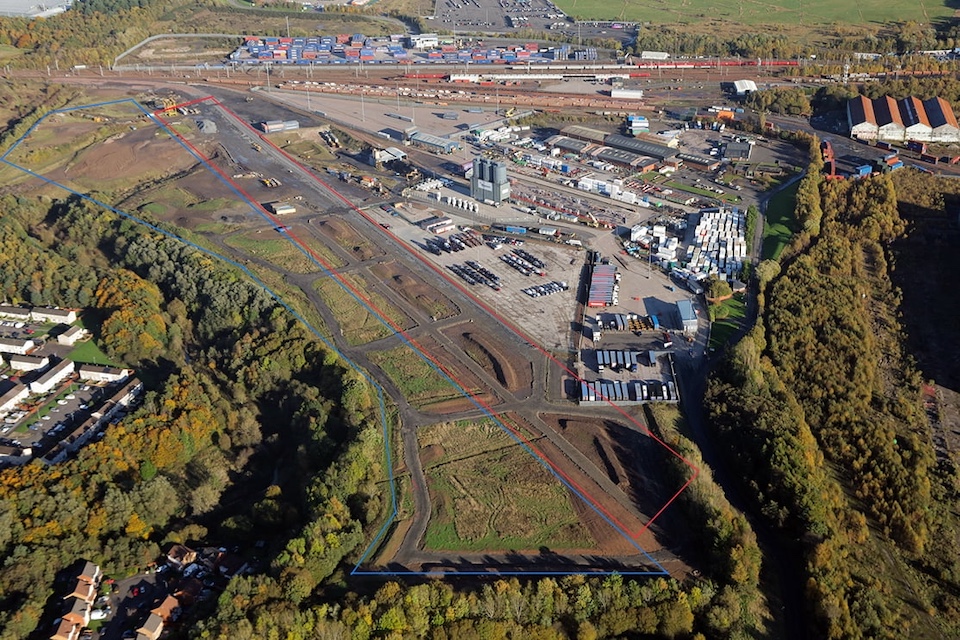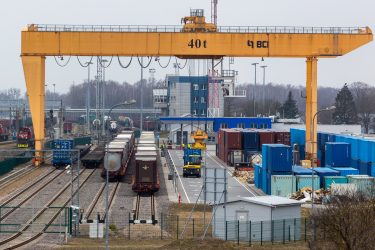Mossend International Railfreight Park (MIRP) is making significant strides towards becoming Scotland’s first carbon-free rail terminal. Recent developments showcase its growing importance in the logistics sector. As construction progresses at the site located near Glasgow, key figures from the industry are taking notice of its potential to revolutionise supply chain logistics in Scotland and beyond.
There is an already existing rail freight facility at Mossend, on the edge of Bellshill, a large town in Lanarkshire, Scotland. It has given the world Sharleen Spiteri and Sheena Easton, but its biggest chart success will be the commissioning of Mossend International Railfreight Park. It’s not quite the stuff of a pop lyric, but the commercial benefits are right on song.
Ministerial and industry attention
A recent visit by Andrea Rossi, CEO of DB Cargo, highlighted the growing interest in MIRP among major logistics players. Interest from the UK’s largest rail freight operator underscores the potential industry support for MIRP. It also underscores its importance in reducing carbon emissions in Scottish supply chains. That’s something that has caught the imagination of the Scottish Government, with the current cabinet secretary for transport, Fiona Hyslop, also being a previous visitor to the site.

Start-up express logistics operator Varamis Rail has also put the site under scrutiny. They already operate from a terminal within the existing railhead at Mossend. The prospect of a fully rail serviced logistics park on their doorstep is an enticing prospect. Similarly, executives from Freightliner, the UK division of the American Genesee and Wyoming Corporation, has explored opportunities for container traffic at the MIRP site.
Diversifying capacity for Scottish logistics
Meanwhile, the longest freight train to cross the border from England to Scotland, arrived at Mossend Railhead in the last week of March. The 766-metre-long train was transporting cars and vans from Dagenham, Essex. It helped demonstrate the potential for increased freight capacity and efficiency at Mossend. The operators at Mossend were eager to point out that the train was handled without any need for marshalling. Importantly, the also highlighted the capacity for the terminal to deal with loads other than containerised traffic. The train was a trial flow, facilitated by Network Rail and the Scottish Government’s agency, Transport Scotland.

Although still under construction, the long-length automotive train, proved the readiness of MIRP to accommodate longer trains. Its proximity to other rail freight facilities at Coatbridge (which was recently sold by Freightliner to Scotland’s Russell Group) and Grangemouth (part of the Forth Green Freeport and operated by Forth Ports) suggests the emergence of a “Scottish Triangle” for intermodal logistics handling, mirroring the “Golden Triangle” in the East Midlands of England.
Location, location, location
All three major intermodal terminals in the very centre of Scotland lie with a short distance from the West Coast Main Line. They are in effect on a spur north of Motherwell. Indeed, Mossend is within sight of the busiest mixed-traffic route in Europe. The terminals also benefit from the geography of the Scottish Central Belt, making them all accessible from the East Coast Main Line as well. That provides robust connections, regardless of disruption elsewhere on the network. That latter point is not just important to rail operations. It is a highly attractive selling point for logistics customers.
The Scottish Government has developed responsibilities for transport and travel. Passenger services often figure highly on that agenda. However, the cabinet secretary, Fiona Hyslop, took the recent opportunity of addressing the Scottish conference of the Rail Freight Group, to reiterate a commitment to rail freight. The development at Mossend is being financed from the commercial sector, partly funded by PD Stirling and other investors. That may have relieved Fiona Hyslop of any stress on her strained ministerial budget, but Mossend is all about generating budget, not draining it.
